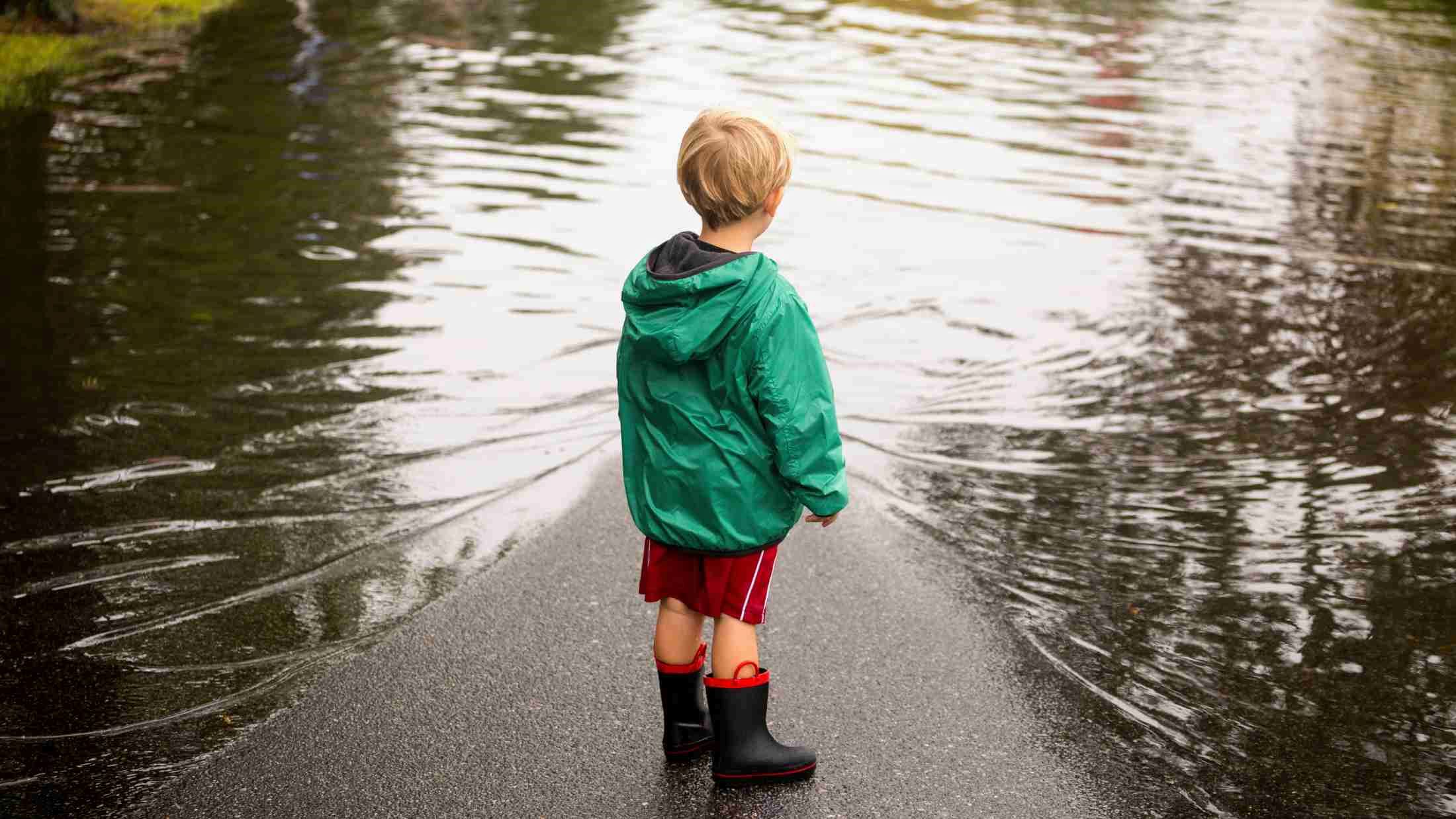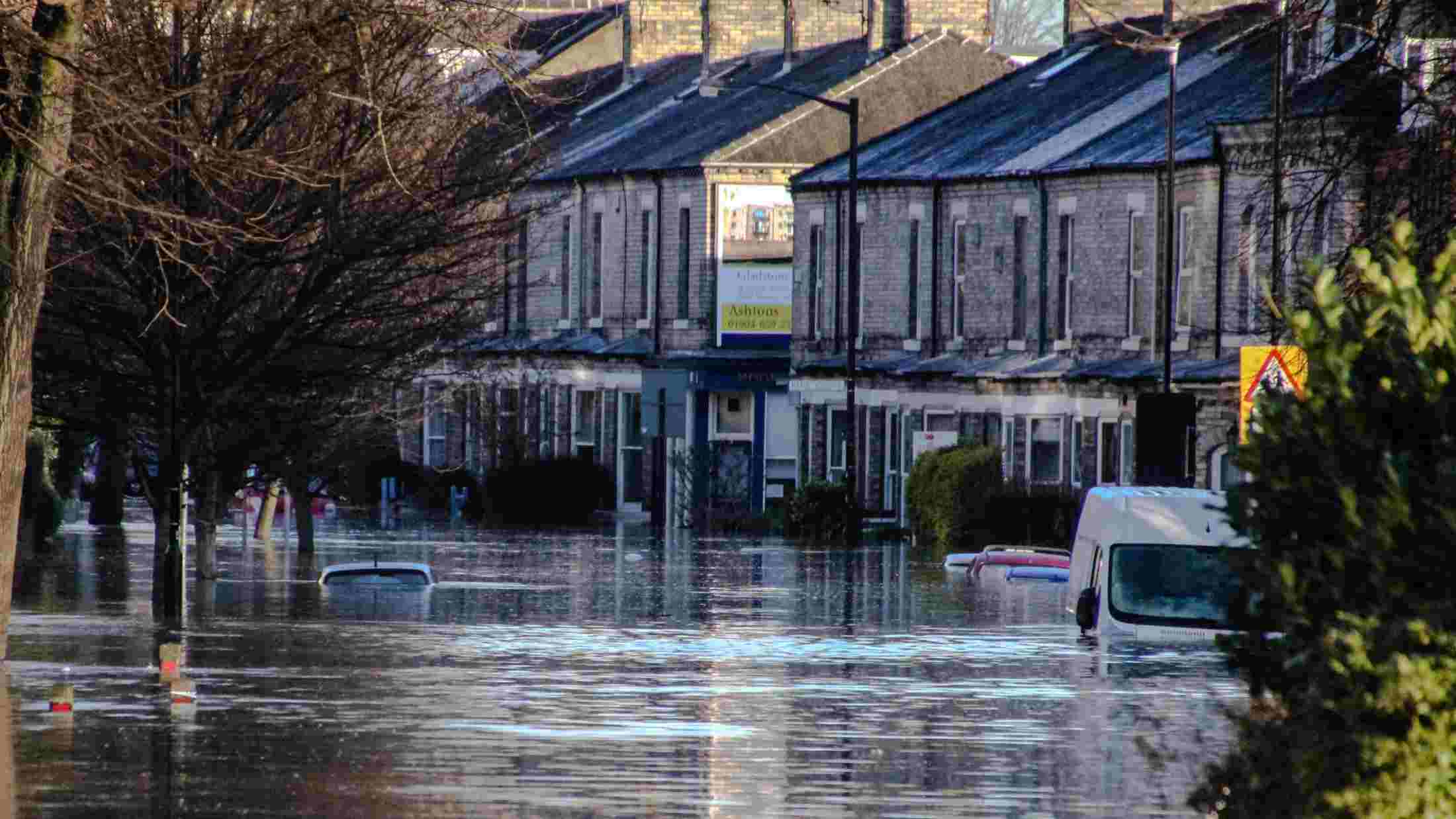When it rains, it pours – at least when it comes to Great Britain’s reliably damp winter weather. The Environment Agency estimate around 5.5 million properties in England are at risk of flooding. So, what can you do when there’s a flood alert?
Here are some easy-to-implement tips to prevent flood damage from putting a dampener on your bricks and mortar investment:
- Getting prepared before a flood hits
- Flood resistance vs flood resilience: what's the difference?
- How to make your property flood resistance
- How to make your property flood resilient
- Crack flood warning codes
- Stay protected whatever the weather
Getting prepared before a flood hits
Getting your property ready for flooding could help minimise damage and save you some serious stress.
Know your contacts
Keep a list of important contacts in an easy to reach place. Save numbers of family and close friends, your local emergency helpline, your insurance company, and the Environment Agency Floodline (0345 988 1188).
Agree with your loved ones where you’ll go during an extreme flood and how you’ll contact each other.
Protect valuables in advance
Don’t just wait for a flood to hit. Consider what treasured items and mementos you can move now. Upstairs or somewhere high up is the best place to keep your valuables and important documents safe and dry.
Keep a list of other valuables, including furniture and electrical equipment, that you can move safely and quickly when a flood is forecast.
Offer a helping hand
Make the safety of those around you a priority. Do you have an elderly family member who you could help prepare for a flood? How about a vulnerable neighbour? It’s nice to be nice!
Insurance reassurance
Getting to grips with your buildings insurance and contents insurance is vital. Not only will it confirm if you’re covered against flood damage, it will also let you know whether there’s a limit on repair costs and replacing damaged goods.
Never underestimate the value of your contents and be sure to update your cover as appropriate. If you’re an AXA customer, you can do this any time in your online account.
Know how to turn off your mains supplies
Floods can come day or night. Make sure you know how to turn off your gas, electricity and water supplies, even in the dark.
If you’re unsure what to do, ask your supplier how it’s done. Why not try creating step-by-step guides to help keep you on track in crucial moments?
Prepare a flood kit
An emergency flood kit can be your lifeline when floods hit full-force. Keep it stocked up with:
- copies of your home insurance documents
- a list of useful contacts
- instructions on turning off your mains supply
- waterproof clothing and blankets
- non-perishable food and drinking water
- a first aid kit and prescription medication
- a torch with spare batteries
- a wind-up or battery radio.
Flood resistance vs flood resilience: what's the difference?
According to the Environment Agency, you have two options to protect your home or business against floods: implementing flood resistance measures and making your bricks and mortar building flood resilient.
The main difference between flood resistance and resilience, is that resistance measures aim to prevent water entering a building. Resilience is focused on reducing the damage caused if water entering your property can’t be avoided.
Ideally, you’ll think about both resistance and resilience measures – especially if you live in a flood-prone area. This will reduce the potential impact of floods you might face in the future.
How to make your property flood resistant
Floodwater can get in through doors and patios, drains and pipe systems, and air bricks. But there are both permanent and temporary flood resistance measures you can use to prevent water seeping in.
Remember: if you’re going to make significant flood-proofing changes to your home, always seek professional advice beforehand.
Permanent resistance
- Repoint cracks in brickwork and applying water-resistant paints.
- Implement flood barriers or gates to help divert water away from your property. You can work out where these will be most effective by watching how water flows or builds up during heavy rain.
- Install flood doors and windows.
- Fit your property with anti-flood airbricks.
Temporary resistance
- Invest in covers to go over air bricks, pet flaps, and appliance vents to help prevent water from seeping in.
- Use sandbags and plastic sheeting to keep your property dry. It’ll help keep contaminated mud and silt out, too.
- Fit your property with demountable door and window barriers.
How to make your property flood resilient
You might not always be able to implement flood resistance measures. If you can’t, you might want to improve your property’s flood resilience instead. This will keep the expense of flood-related damage to a minimum and make the drying out and cleaning process much simpler.
- Get door thresholds raised.
- Replace fitted carpets with tiles and replace timber floors with concrete or treated timber in areas likely to be affected by floodwater.
- Fit water-resistant materials, such as plastic, stainless steel or solid wood, in bathrooms and kitchens.
- Invest in water-resistant skirting or varnish skirting boards to minimise water damage.
- Replace wooden frame windows with UPVC.
- Raise plug sockets and other electrical equipment at least 1.5m above floor level. This will help prevent cabling from being damaged.
- Consider raising kitchen appliances using plinths.
- Put all irreplaceable valuables and important documents in waterproof bags. If you can,move them to higher shelves, or upstairs.
- Place a pump in your cellar or in an under-floor void. This will help extract any flood water that manages to make its way into your property.
Crack flood warning codes
So you can prepare and react to floods accordingly, it’s important to understand the Environment Agency’s flood warning codes.
1. Flood alert - Prepare
Used between two days and two hours in advance of a possible flood. It’s time to get prepared, be aware, and keep an eye on the weather situation.
What you can do:
- Consult your flood plan
- Prepare a flood kit with essential items
- Avoid walking, cycling or driving unless absolutely necessary
- Check flood warnings.
2. Flood warning - Act
Usually announced between half an hour to one day in advance of flooding, this means flooding is expected. You’ll need to take immediate action.
What you should do:
- Protect yourself, family and help others.
- Keep a flood kit handy
- Turn off gas, electricity, and water supplies
- Move family and pets to a safe place
- Put flood protection in place if safe to do so.
3. Severe flood warning – Survive
The highest flood alert there is. This is announced when flooding poses a significant risk to life. Expect fast flowing water, damage to roads and railways, and possible collapse of buildings and structures.
What you need to do:
- Follow advice from emergency services.
- Stay in a safe place with a means of escape, but be ready if you need to evacuate your home.
- Call 999 if you’re in immediate danger.
To stay up to date with these alerts, monitor water levels on the Environment Agency website or sign up for flood warnings to get alerts by phone or email.
Sometimes preventing flood water from entering your home is completely unavoidable. But a home emergency contingency plan and weather alerts can help you keep flood damage to a minimum.















